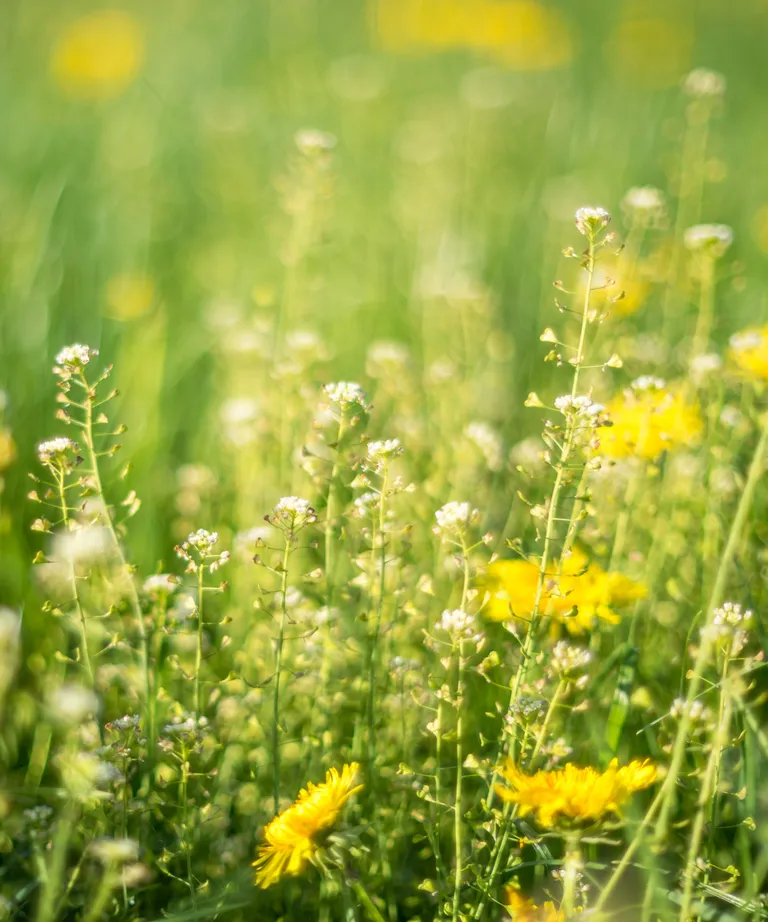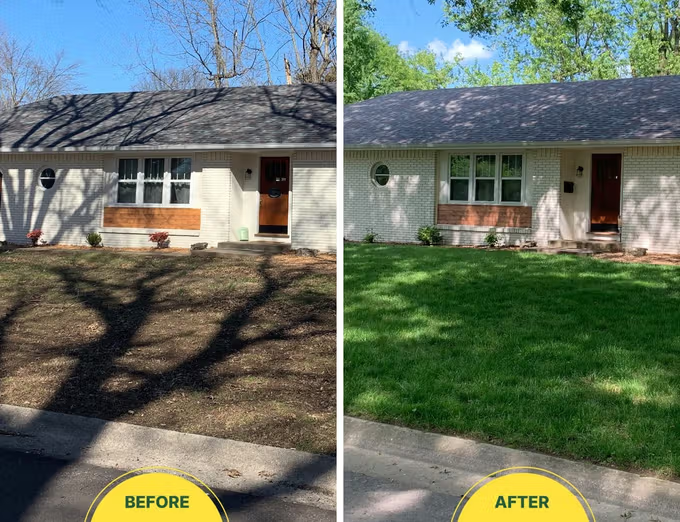When to Start Cutting Grass After Winter
Last Updated on March 30, 2025 by Duncan
Choosing the appropriate time to begin mowing the grass after winter is crucial for a thriving, lush green garden in the summer.
While this is the case, you should note that if done incorrectly, it may damage grass growth.
Given the cool climate and slower grass growth throughout the winter, there is no need to cut the grass until the cold weather passes. With this in mind, the big question is, when to start cutting grass after winter?
March, or possibly late February, is the best time to resume lawn trimming after winter.
When mowing grass for the first time after winter, ensure that all chances of frost have passed before cutting the grass again. You also should ensure the grass isn’t too wet.
If grass is still frozen or you have a random overnight frost, keep the lawn mower away from it, as you will easily break off tender green shoots.
You need to keep an eye on the grass.
The easiest way to know when to start mowing your lawn after winter is to watch the grass grow.
Keep an eye on how your grass grows over time. Estimate how tall it is getting and keep an eye on the weather; before you get out that mower, make sure your grass fits the following three conditions:
Wait until temperatures are regularly above 40 degrees Fahrenheit. Attempting to cut grass that hasn’t completely thawed from its winter slumber can harm the sensitive blades.
Make sure the grass is dry. At least, that is the prevalent wisdom. However, the spring rains can be relentless at times. The best way to do it is to get your timing right and ensure you mow later in the day when the grass has dried.
Determine whether your grass has reached the appropriate height. You should note that this will be influenced by the grass you have on your lawn. Cool-season grasses have an optimal height of about 2″-2.5″.
Keep in mind that this is the height after the haircut. When you mow, you should remove no more than one-third of the grass’s height, thus, your pre-cutting measurement should be around 3″-3.75″ for most cool-season grasses.
Want to know the specifics of your grass type? Here is a chart to guide you on the right height to go with:
GRASS TYPE |
SUGGESTED MOWING HEIGHT |
MOW WHEN GRASS REACHES THIS HEIGHT |
| BERMUDA GRASS | 1″-1/2″ | 1 1⁄2″-2′′ |
| CENTIPEDE | 1 1⁄2″-2″ | 2″-3″ |
| FINE FESCUE | 2′′-2 1⁄2″ | 3′′-3 3/4′′ |
| KENTUCKY
BLUEGRASS |
2″-2 1/2″ | 3″-3 3/4′′ |
| PERENNIAL RYEGRASS | 11⁄2″-2 1/2″ | 2″-3 3/4″ |
| ST. AUGUSTINE | 2 1/2″-3″ | 3 3/4″-4 1/2″ |
| TALL FESCUE | 2″-3″ | 3″-4 3/4″ |
| ZOYSIA | 1″-1 1/2″ | 1 1/2″-2″ |
Nobody likes to haul out a tape measure every time they go to mow their lawn. To avoid this, here’s a tip for setting the lawnmower height: Adjust the height of your blade and leave it there.
Mark a line on your lawnmower’s wheel to indicate the minimum amount of pre-cutting.
You should then draw an arrow to indicate which way is “up” when the wheels rotate. When the grass has grown tall enough to reach the line, it is time to trim.
How to prepare for the first cut after winter
For the best outcome, do the following:
- Sharpen your mower blades. Dull blades can shred your grass instead of cutting it smoothly, leaving it susceptible to disease.
- Before you do any cutting, don’t just inspect the lawn mower. Also, thoroughly inspect your entire mower.
- Dethatch the lawn. Dethatching breaks up dead grass, allowing oxygen and water to reach the roots of the grass, where they are sorely required. Not sure if your grass requires dethatching? Get in touch with a professional to help you out.
- Perform a general yard spring cleanup. Remove any leaves and debris that could allow illness to settle on the lawn. Consider cutting trees and hedges, as well as whether a new firepit or paver patio is a good fit for your needs.
Early spring is the best time to get a price on landscaping services for the season.
Tips when cutting grass
On the initial mow, remove only a small portion of the top of your grass – less than one-third of the height is good.
Cutting too close stresses the grass, resulting in weak roots and increasing your lawn’s susceptibility to dryness, disease, and barren spots. You can gradually take more off over the next few weeks without hurting the grass.
Cut later in the day, when any frost has melted, or the dew has evaporated; cutting dry grass is ideal.
If the ground is excessively damp, the mower’s weight can damage the grass and compact the soil, making it difficult for the grass to form strong roots. If it has been damp or thick soil, wait a few dry days before mowing.


